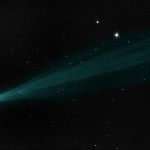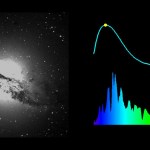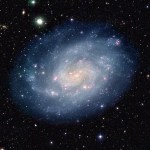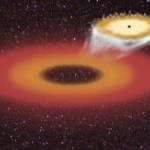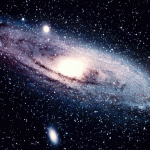merger
"Where you used to be, there is a hole in the world, which I find myself constantly walking around in the daytime, and falling in at night. I miss you like hell." -Edna St. Vincent Millay
It was just a little while ago that we were all speculating wildly -- and optimistically -- about Comet ISON, as it plunged towards the Sun from its origins in the very, very distant Solar System. As its perihelion date (the moment of closest approach to the Sun) drew near, you may have noticed something interesting about photos of the comet: it's tail appeared to get longer and longer!
Image credit &…
"If you are writing any book about the end of the world, what you are really writing about is what's worth saving about it." -Justin Cronin
Well, it's Friday again, and that means it's time to dip into the question/suggestion box, and see what you've come up with for me. This week's Ask Ethan comes from our reader Michael Acosta, who wants to know about the end of the world. Not, mind you, the way the world is actually likely to end, but in a way that would be satisfying to an aspiring science fiction writer.
In this wonderful science fiction book I am writing, there is a subplot involving…
"The man's a born straggler... another lucky exception to the rules of natural selection. A million years ago he would've been an easy snack for a saber-toothed tiger." -Carl Hiaasen
Welcome to the latest Messier Monday, where each week we take a look at one of Charles Messier's original catalogue of 110 deep-sky objects that comet-hunters might easily confuse with those transient passers-by in our Solar System.
Image credit: Greg Scheckler, from his 2008 Messier marathon, where he nabbed 105/110.
Quite to the contrary, each of the 110 objects in the Messier catalogue are (semi-)permanent…
"You have to have a canon so the next generation can come along and explode it." -Henry Louis Gates
When it comes to stars, their fates are very well known. Every single star that's massive enough to fuse hydrogen into helium in its core will someday run out of fuel and die.
Image credit: NASA, ESA, F. Paresce, R. O'Connell, & the HST WFC3 Science Oversight Committee.
The very brightest and most massive stars -- about 1-in-800 of all stars -- will die in a spectacular, core-collapse supernova when their core burns fuel all the way through iron and finally runs out of room to go.
This…
"We don’t understand how a single star forms, yet we want to understand how 10 billion stars form." -Carlos Frenk
The Universe has been around for a long time: nearly 14 billion years, to the best of our knowledge. When it was very young, there were absolutely zero stars in it, while today, there are hundreds of billions of galaxies, each of which contains anywhere from a few billion to many trillions of stars.
Image credit: NASA, ESA, and the Hubble Heritage (STScI / AURA) - ESA / Hubble Collaboration
The galaxy shown above, NGC 2841, is very similar to our own Milky Way.…
No, not because it was too young to drink! Scientists at the Max Planck Institute for Extraterrestrial Physics were looking at some X-ray objects, and discovered something really weird: a very bright X-ray source moving out of a galaxy at nearly 3,000 kilometers/second! This thing is a goner. If our Sun were moving at even one quarter of that speed, it would get thrown out of our galaxy.
Now, here's the kicker: this isn't just any old object getting tossed out of a galaxy, it is a huge black hole! How huge? About 300,000,000 times the mass of our Sun. You read that number right: 300,000,000…
The Milky Way galaxy is a relatively big spiral galaxy. So is Andromeda. There are about 20 dwarf galaxies that are gravitationally bound to us; combined with us, all of this makes up the local group. But Andromeda is moving towards us, and eventually, it's going to merge with us. I'll once again show you a video of what this merger might look like:
But what would we see, here in the Milky Way, as Andromeda got closer and closer to us? Right now, Andromeda looks like this:
But Andromeda is also very far away: about 2.3 million light years (770 kpc). The center of it is tiny on the sky, but…
